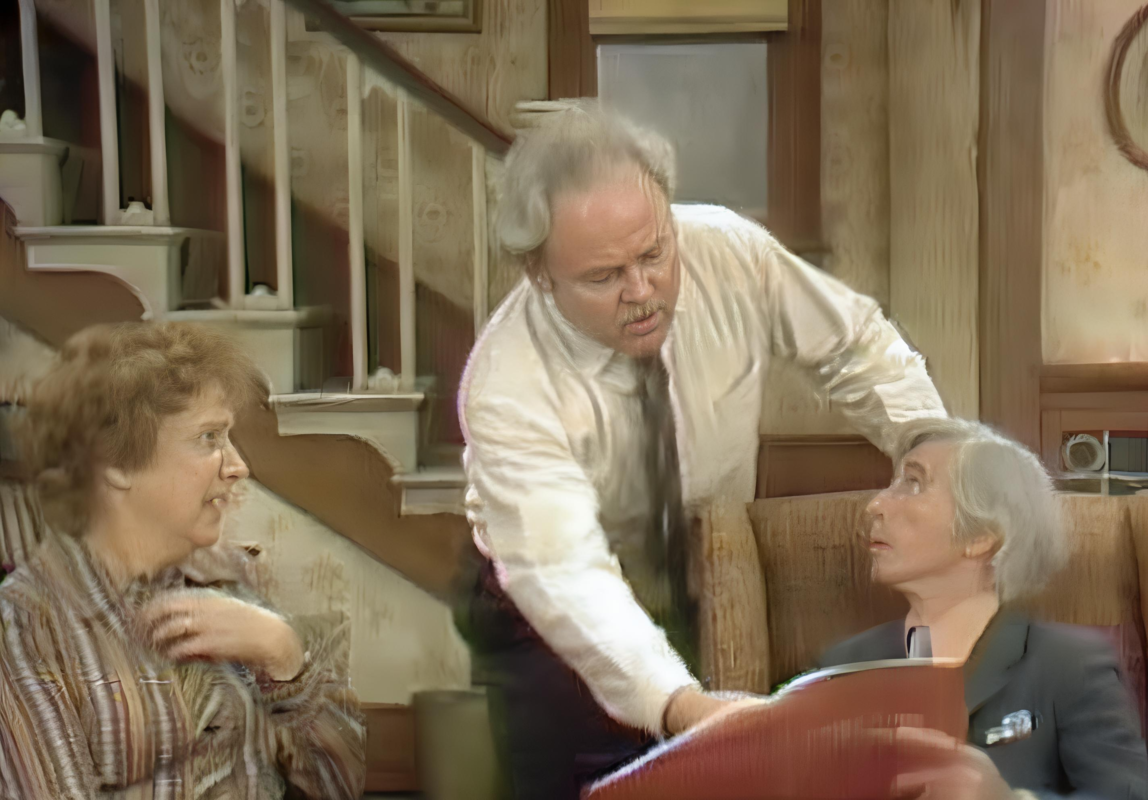
W.E.B. Du Bois, a pioneering sociologist, historian, and civil rights activist, provided profound insights into race and social structures in America. His concept of “double consciousness” and his critique of systemic racism remain relevant in analyzing media representations of race. Through Du Bois’s lens, we can critically examine the 1970s sitcom “All in the Family” and its approach to addressing racial and social issues.
“All in the Family,” created by Norman Lear, broke new ground in American television by confronting contentious topics such as racism, sexism, and homophobia through the character of Archie Bunker. Archie, portrayed as a lovable bigot, was designed to satirize prejudiced attitudes. However, using Du Bois’s framework, we can delve deeper into the complexities and potential shortcomings of this approach.
Du Bois’s idea of “double consciousness” describes the internal conflict experienced by marginalized groups in a society that devalues their identity. He articulated how African Americans navigate a world that imposes both a Black and American identity upon them, often in ways that conflict and dehumanize. Applying this concept to “All in the Family,” we can question whether the show adequately captures the nuanced experiences of Black Americans or merely reflects the white perspective on racism.
“All in the Family” primarily centers on Archie Bunker’s interactions with his family and neighbors, including occasional encounters with Black characters. While these interactions highlight Archie’s bigotry, they often do so from a comedic angle that risks trivializing the lived experiences of those subjected to racism. Du Bois would likely argue that the show’s focus on a white protagonist grappling with his prejudices fails to fully convey the depth of racial issues.
“Representation in media must go beyond surface-level interactions,” Du Bois might assert. “It must delve into the systemic and personal dimensions of racism, presenting Black characters with the complexity and humanity they deserve.”
Moreover, Du Bois emphasized the importance of education and the dissemination of true knowledge to combat racism. He believed that art and literature should serve as tools for enlightenment and social change. In evaluating “All in the Family,” we must consider whether the show educates its audience or merely entertains them with caricatures of prejudice.
“Art has a duty to enlighten,” Du Bois would argue. “Satirical portrayals of racism must be carefully crafted to ensure they do not reinforce the very stereotypes they seek to dismantle.”
One critical aspect of Du Bois’s philosophy is his critique of systemic racism and the structures that perpetuate inequality. While “All in the Family” addresses individual prejudices, it often does not extend its critique to the broader societal and institutional forces at play. Du Bois would advocate for a more comprehensive exploration of these issues, one that challenges viewers to confront and question the systemic nature of racism.
“True progress requires an examination of the institutions and structures that sustain inequality,” Du Bois might contend. “Media must encourage audiences to see beyond individual prejudices and understand the larger societal context.”
In addition, Du Bois was a proponent of uplifting Black voices and perspectives. He would likely critique “All in the Family” for its limited portrayal of Black characters, who often serve to highlight Archie’s racism rather than being fully realized individuals with their own stories and struggles.
“Black voices must be central in any discussion of race,” Du Bois would emphasize. “Their stories and experiences are vital to understanding and addressing the complexities of racism.”
By examining “All in the Family” through W.E.B. Du Bois’s lens, we can appreciate the show’s efforts to address social issues while also recognizing its limitations. Du Bois’s insights remind us of the importance of authentic representation, the need for comprehensive critiques of systemic racism, and the power of media to educate and inspire social change.
To truly honor Du Bois’s legacy, contemporary media must strive to go beyond surface-level depictions of prejudice. It should seek to elevate marginalized voices, provide deep and nuanced portrayals of racial experiences, and challenge the systemic structures that sustain inequality. Only then can we create media that not only entertains but also enlightens and empowers.
